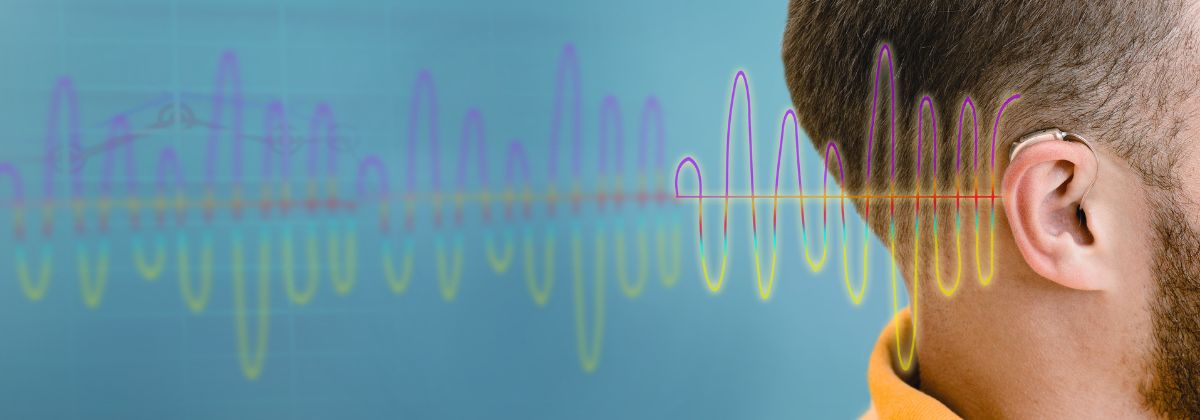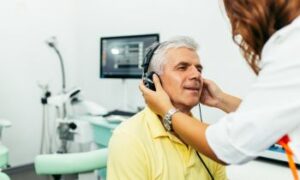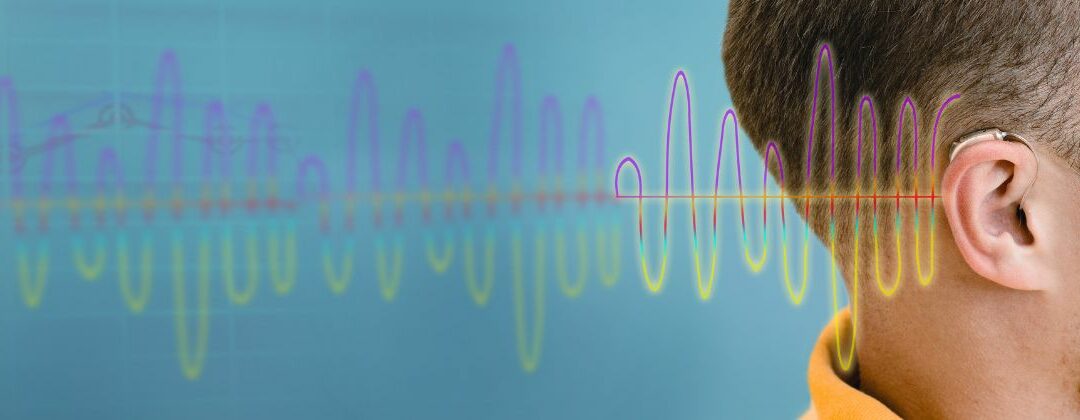
Enhancing Communication
Imagine sitting in a crowded theatre, eager to watch a show or presentation… Once the lights dim and the show begins, you find yourself struggling to catch the dialogue. In moments like this, assistive listening technology and devices come in place. This new technology has revolutionised accessibility for individuals with hearing loss, allowing them to fully immerse in the experience without having to rely on hearing loops or hearing aids.
Let’s take a closer look at how assistive listening devices (ALDs) are ushering in a new era of devices that make hearing more accessible in people’s daily lives, especially those with hearing impairments.
What Are Assistive Listening Devices?
Assistive listening devices are specifically designed to enhance communication and accessibility for hard-of-hearing individuals. These devices employ technology that goes beyond the traditional hearing loop systems but instead utilise advanced wireless technologies to facilitate assistive listening.
Over the years, assistive devices for people with hearing loss have developed tremendously thanks to the advancement of technologies. These innovations have replaced traditional hearing aids and hearing loop systems to deliver a more immersive, functional, and flexible hearing solution to adapt to the varying needs and preferences of the user.
While an assistive listening system aims to improve the communication and listening skills of the user, especially those with hearing loss, it won’t guarantee to solve all of an individual’s communication and listening difficulties. It is designed to augment those difficulties to make functioning in their daily lives easier.
Differences Between Assistive Listening Devices and Hearing Aids
Before we dive into the different types of assistive listening devices, it’s important to recognise the difference between an assistive listening device and a hearing aid. While these devices share some similarities, they also have a few distinctions that can determine which device or technology best suits the user’s needs.
 Assistive devices for listening utilise technology to enhance an individual’s sound perception and communication abilities, especially where there’s a lot of background noise. Assistive listening devices capture, amplify, and clarify the sound for users to hear clearly in various environments. Assistive devices are beneficial in specific environments, such as theatres, classrooms, and speaking engagements. These situations require heightened sound clarity and increased volume.
Assistive devices for listening utilise technology to enhance an individual’s sound perception and communication abilities, especially where there’s a lot of background noise. Assistive listening devices capture, amplify, and clarify the sound for users to hear clearly in various environments. Assistive devices are beneficial in specific environments, such as theatres, classrooms, and speaking engagements. These situations require heightened sound clarity and increased volume.
Hearing aids, on the other hand, are a medical device recommended for individuals with hearing loss or hearing impairments. A hearing aid is tailored to the specific hearing needs of an individual to suit various listening environments. The device can help transmit sound and compensate for hearing aid users. Only a professional audiologist can diagnose this treatment for hearing aid users since they must be fine-tuned to suit your unique hearing profile.
While hearing aid users rely on the device to improve hearing ability and enhance speech comprehension, assistive listening devices are meant to amplify the sound source to suit specific listening settings, either in conjunction with hearing aids or on their own.
Since hearing aids are recommended for treating hearing loss, they are considered medical devices and may be covered by insurance. Assistive listening devices, however, are used to enhance listening in specific situations and have less insurance coverage.
Types of Assistive Listening Devices
Assisted speech and listening devices utilise various technologies to enhance a person’s ability to listen and hear. Here are devices that help transmit sound in various listening situations and improve accessibility for the users.
Induction Loop Systems
 Induction loop systems use electromagnetic fields to transmit sound to hearing aid users or via their cochlear implants. A loop of wire must be installed in a specific venue or room to send the audio signal in a loop. The audio signal is transmitted wirelessly into the user’s assistive device as long as it is compatible with their hearing device. This type of device transmits sound with utmost clarity and volume.
Induction loop systems use electromagnetic fields to transmit sound to hearing aid users or via their cochlear implants. A loop of wire must be installed in a specific venue or room to send the audio signal in a loop. The audio signal is transmitted wirelessly into the user’s assistive device as long as it is compatible with their hearing device. This type of device transmits sound with utmost clarity and volume.
Perimeter Loop Systems
Perimeter loop systems offer an alternative to the traditional induction loop systems for hearing. However, it is distinguished from an induction loop since it uses multiple loop segments instead of creating a loop in one area. These multiple loop segments are installed within a room or space, giving more flexibility and coverage so the user can move around within these listening environments and get the listening support they need. Plus, they can receive improved quality from the sound source to deliver hearing support, even in noisy environments.
Alerting Devices
This device is specifically designed for assistive listening. You connect alerting devices to alarm clocks, mobile phones, and doorbells. It emits a sound and a blinking light to alert those with hearing loss that a sound is transmitted and certain situations require their action.
Other New Assistive Listening Technologies
Wireless Infrared Systems
Wireless infrared systems are part of the modern listening devices and solutions available to those with hearing impairments. It uses infrared lights to transmit audio signals to one or more receivers. These receivers capture and translate that sound source to deliver clear audio to hearing aid users.
The wireless system is suitable for environments where privacy is crucial, or you want to limit interference.
Radio Frequency Systems
Radio frequency listening systems use radio waves to transmit audio signals. It consists of a transmitter that converts audio into radio frequency signals, and one or more receivers that decode the audio signal and deliver it to users.
 One advantage of radio frequency systems is the ability to provide a better range compared to other transmission methods. The system doesn’t require a direct line of sight between the transmitter and receiver. It can transmit audio over longer distances, allowing users to move around within a venue without losing the audio signal.
One advantage of radio frequency systems is the ability to provide a better range compared to other transmission methods. The system doesn’t require a direct line of sight between the transmitter and receiver. It can transmit audio over longer distances, allowing users to move around within a venue without losing the audio signal.
Personal Sound Amplification Devices
Personal sound amplification devices are portable device that resembles a hearing aid but is suited for various listening environments instead of being tailored to specific hearing profiles.
It is also more affordable than hearing aids since you can purchase it over-the-counter. However, it should not be used as a substitute for the hearing aids given by a professional audiologist since the latter conducts a thorough hearing assessment to optimise the performance of the individual’s hearing aid.
Importance of Assistive Listening Devices
Assistive listening devices transform the lives of individuals with hearing loss and impairments thanks to the technologies that promote accessibility and inclusivity for various listening situations. The following are the key features and benefits of using devices made for assistive listening.
Improve Communication
 Devices for assistive listening bridge the communication gap by improving one’s hearing abilities. It produces amplified sounds and delivers better sound clarity. Therefore, a person can hear clearly and improve speech recognition. It promotes better communication in various settings wherein listening is critical. The use of assistive devices is essential in multigroup communication and noisy environments.
Devices for assistive listening bridge the communication gap by improving one’s hearing abilities. It produces amplified sounds and delivers better sound clarity. Therefore, a person can hear clearly and improve speech recognition. It promotes better communication in various settings wherein listening is critical. The use of assistive devices is essential in multigroup communication and noisy environments.
Independence
Devices for assistive listening empower users to achieve independence since they get aid for hearing loss or impairments. Some advanced devices offer personalised controls, such as amplification and other customisable settings. Users can adjust the volume levels to suit their needs and the sound source.
Accessibility Compliance
Assistive listening devices enable venues and spaces to maintain accessibility compliance. It ensures equal access to information and communication for all individuals, including those with hearing loss or impairments. These solutions deliver equitable opportunities for people to engage and participate.
Recent Advancements in Assisted Listening Technology
Technologies for assistive listening continue to evolve, empowering companies to develop more advanced solutions that deliver accessibility. Here are noteworthy developments in the industry that open up more learning opportunities.
Bluetooth Connectivity
Aside from radio frequency and infrared, Bluetooth is another technology that is tapped for assistive listening solutions. This technology enables wireless connection with compatible devices, enhancing the clarity and accessibility of audio content.
 AI Integration
AI Integration
Artificial intelligence (AI) is now being integrated into assistive devices for listening to customise and improve sound processing ability. These AI-powered assistive devices are finding their way into more listening situations to adapt the sound processing ability in real time. Meanwhile, AI can also analyse user preferences and habits to maximise results.
Miniature and Discreet Designs
The miniaturisation of hearing aids and assistive devices for hearing is another breakthrough in the industry. The designs are sleeker and less obtrusive for the user to deliver enhanced aesthetics and comfort. It helps users to remove the stigma of wearing hearing aids and other assistive devices.
Remote Control
Using remote controls for assistive devices through smartphone apps and remote controls deliver more efficient volume control and gives users better customisation option.
Telecoil Technology
Telecoils, found in more recent assistive devices, are small coils that pick up electromagnetic signals directly connecting to compatible sound sources while reducing interference and improving sound quality.
These recent advancements in hearing assisted devices utilise the technologies available further to enhance the lives of people with hearing loss.
In Conclusion
Technology continues to evolve, and so does the quality of assistive listening devices available to users with hearing loss or impairments. These hearing solutions foster inclusivity and ensure everyone can adapt to various listening environments, allowing greater participation and communication in different situations.
Mediascape can recommend assistive listening systems and solutions for your venues, contact us today.


 AI Integration
AI Integration

